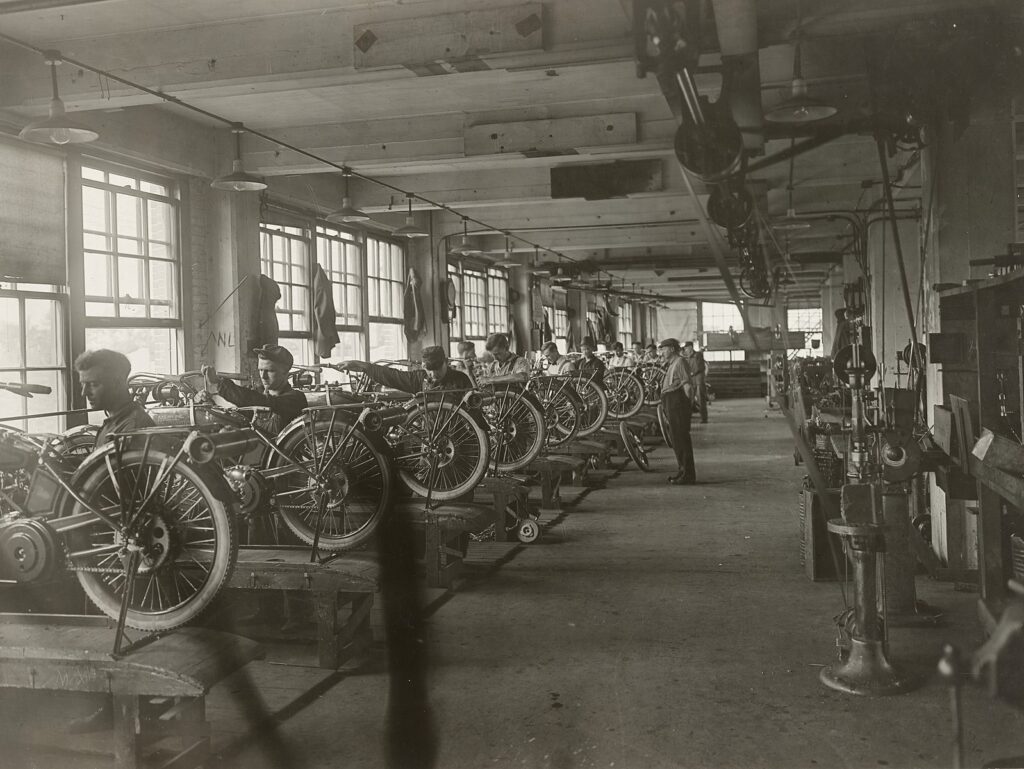William Harley and Arthur Davidson: Men Behind the Iconic Motorcycle
Harley-Davidson, Inc. again produced large numbers of motorcycles for the US Army during WWII. This included a military-specific version of its 45 cubic-inch (740 cm3) model called the “WLA” (the “A” standing for “Army”). All told, more than 90,000 military motorcycles were manufactured.
For their extraordinary war-time efforts, Harley-Davidson, Inc. received two Army-Navy “E” Awards; one in 1943, the other in 1945, for “Excellence in Production.”
At the close of WWII, Harley-Davidson, Inc. resumed civilian production, manufacturing a selection of large V-twin motorcycles–built for both open highways and racetracks.

A Reputation Tarnished
In 1952 (nine years after Harley died, two years after Davidson) after petitioning the US Tariff Commission for a 40% tax on imported motorcycles, Harley-Davidson, Inc. was charged with “restrictive practices.” This ultimately affected production, popularity, and financial growth.
Efforts to Save the Struggling Company
In 1969, the recreational equipment company American Machine and Foundry (AMF) acquired Harley-Davidson Inc. They streamlined production and slashed the workforce. This tactic resulted in a labor strike and cost-cutting, resulting in an era of low-quality bikes.
Ironically, even as the US market was flooded with inexpensive post-Vietnam-era Japanese-made bikes (Honda, Kawasaki, Suzuki, and Yamaha), Harley-Davidson models were disproportionately expensive.
They were also inferior in performance, quality, and handling. Sales quickly dropped–the company nearly went bankrupt.
Reconstruction, Retro Marketing, Recovery
In 1981, AMF sold the floundering company to a conglomerate of 13 investors. These were led by businessmen Vaughn Beals and Willie G. Davidson (grandson of Harley-Davidson co-founder, William A. Davidson). It sold for a reported $80 million.